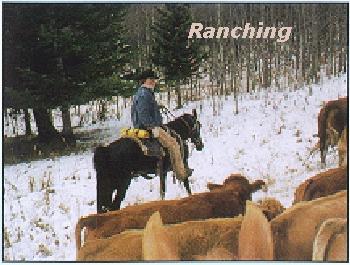|
|
|
 |
 |
 |
 |
 |
 |
THE HISTORYThe blood lines of the Tennessee Walking Horse represent most of the breeds and families of horses known to early America and Canada. Shortly after 1790 when Tennessee was permanently settled by immigrants, these individual bloodlines came to the central portion of Tennessee where the slow process of unification began. History discloses that “it is the purpose of which a horse is intended that begets a breed”. And therefore, for the reason of utility, the Tennessee Walking Horse evolved. The people who carefully developed the breeding patterns which resulted in the Walking Horse were not trained geneticists but farmers endowed with determination, proficiency and patience. The Walking Horse bears the blood of four distinct breeds; the Thoroughbred, Standardbred American Saddle Horse and the Morgan. With exception of the Thoroughbred, behind these distinct breeds is the influential blood of the Narragansett and Canadian Pacer. This horse was first used for riding, driving and farm work and has long beenassociated closely with man. As stated in the ‘Echo of Hoofbeats’ Dr. Bob Womack claims that “there is quite an irony in the fact that pleasure Walking Horses are making an impact on Canadian horse stock, since it was from Canada that the breed received its major thrust. Without exception, authorities on Walking horses have attributed this horse’s eventual development to the Canadian Pacer”. The Tennessee Walking Horse is reputed for its gentle disposition and kindly manner and to this day continues to demonstrate itself as one of the most versatile horses anywhere. The disciplines it excels at include pleasure, endurance and trail riding; ranching; gymkana; English, Western and Plantation equitation; field dog trailing; driving; and side-saddle; thus truly distinguishing it as: “A HORSE FOR ALL REASONS”THE TENNESSEE WALKING HORSEThis member of the light breeds of the equine family is no mystery horse nor is there anything of magic or difficulty in understanding his makeup. However, the agreeable temperament of the Tennessee Walking Horse, together with the smooth and easy gaits he performs, has caused him to be of great wonder and subsequently in much demand.The Tennessee Walking Horse is one of man’s grandest achievements in all the centuries of selective breeding of horses. The natural gaits of this horse, especially his running walk and canter, have to be one of the most agreeable riding experiences ever encountered. This horse is a triumph of selective breeding and will always be renowned for its ability to provide a comfortable ground covering ride that one can sit all day with ease. |
|
|

